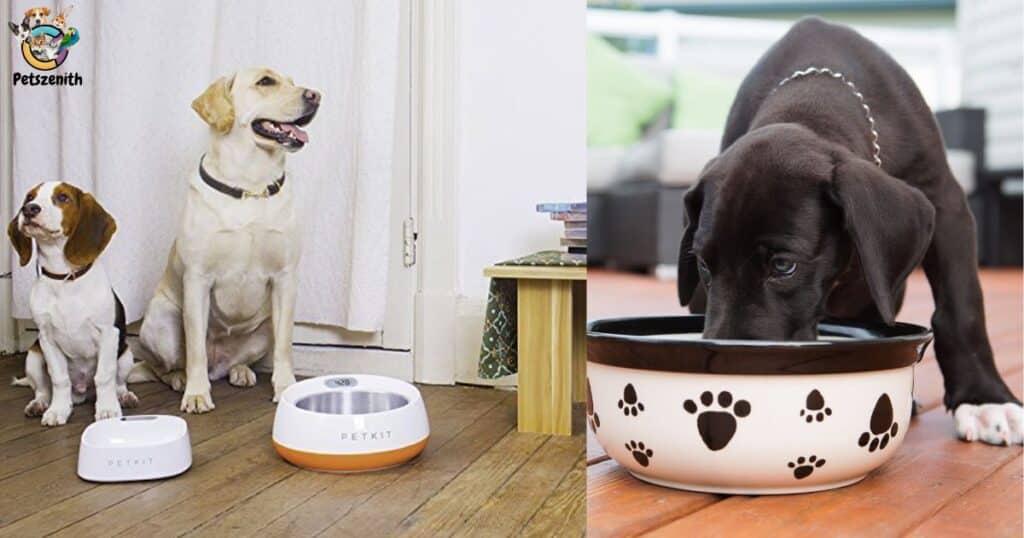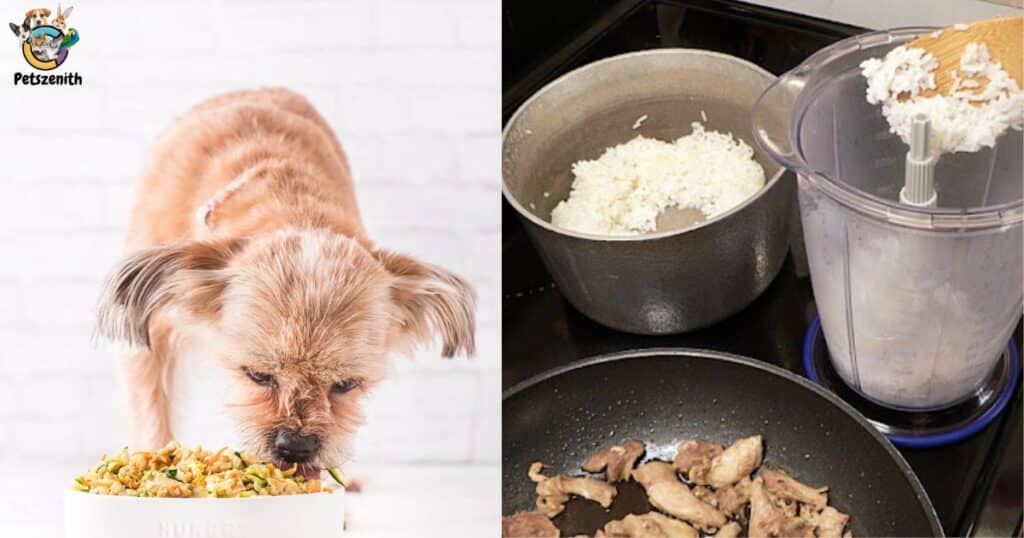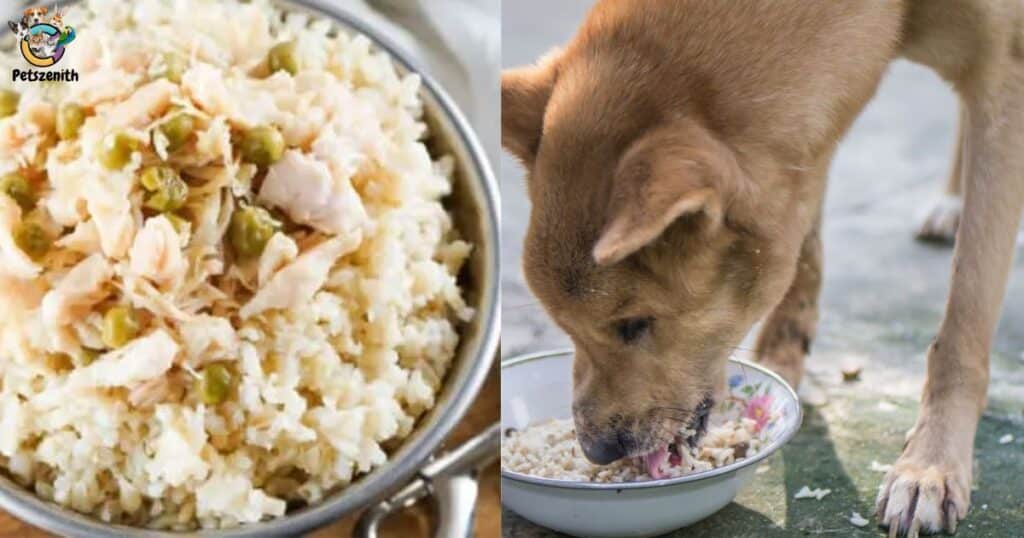As pet owners, we want the best for our furry companions, and that includes providing them with a nutritious diet. Among the various options available, chicken and rice have emerged as a popular choice for dogs due to their digestibility and nutritional benefits. In this guide, we’ll delve into how much chicken and rice you should be feeding your dog to ensure they receive the perfect portions for optimal health.
Wondering about the perfect portions of chicken and rice for your furry friend In this guide, we’ll explore the ideal quantities of chicken and rice to feed your dog for optimal health. Whether you’re a new pet parent or seeking to improve your dog’s diet, understanding how much chicken and rice to provide is essential. Let’s dive in and discover the perfect portions for your beloved canine companion. How Much Chicken & Rice for Your Dog? Perfect Portions!
The perfect portions of chicken and rice for your dog It’s essential to consider your dog’s size, age, and activity level. A general guideline is a 50/50 ratio of chicken (protein) to rice (carbohydrates). Monitor your dog’s weight and adjust portions accordingly. Chicken and rice provide a balanced diet and are gentle on the stomach. Remember to consult your veterinarian for personalized recommendations.
Understanding Dog Diet Basics
Understanding the basics of your dog’s diet is crucial for their health. Start with high-quality dog food that meets their nutritional needs. Consider factors like age, breed, and activity level when choosing the right diet. Protein is essential for muscle health, while carbohydrates provide energy. Don’t forget healthy fats for coat and skin health. Monitor your dog’s weight and adjust their diet as needed. Consulting with a veterinarian can provide personalized advice for your furry friend’s diet needs.
Benefits of Chicken and Rice for Dogs
The benefits of chicken and rice for dogs:
- Chicken is a lean protein source, supporting muscle health.
- Rice provides carbohydrates for energy, aiding in digestion.
- This duo is gentle on sensitive stomachs and easily digestible.
- Chicken and rice offer a balanced diet, promoting overall health and well-being in dogs.
- Consult your vet for tailored dietary advice.
How Weight and Size Affect Diet?

Caloric Requirements: Larger dogs typically have higher caloric needs than smaller breeds due to their higher metabolic rate and energy expenditure. It’s important to feed them a diet that meets their energy requirements to maintain a healthy weight.
Portion Control: The size of your dog directly influences the portion sizes they require. Smaller dogs may only need a few cups of food per day, while larger breeds may require several cups. It’s crucial to measure portions accurately to prevent overfeeding or underfeeding.
Nutritional Density: Smaller dogs may need a more nutrient-dense diet to ensure they receive all essential vitamins and minerals in their smaller portions. Conversely, larger dogs may require a diet with lower caloric density to prevent excessive weight gain.
Body Condition Score: Monitoring your dog’s body condition score (BCS) can help determine if they are at an ideal weight. Adjust their diet accordingly based on whether they need to gain, maintain, or lose weight.
Breed-Specific Needs: Different dog breeds have varying nutritional requirements based on factors such as metabolism, activity level, and predisposition to certain health issues. Consider these factors when choosing the right diet for your dog.
Consultation with a Veterinarian: Always consult with your veterinarian to develop a tailored diet plan that considers your dog’s weight, size, age, and overall health. They can provide valuable guidance on portion sizes and dietary recommendations specific to your dog’s needs.
Recommended Post: 15 Common Questions About Mini Goldendoodles
When to Choose Chicken and Rice for Dogs?
Chicken and rice are ideal choices when your dog has digestive issues. They’re gentle on the stomach and easy to digest. If your dog has allergies or sensitivities, chicken and rice can be a hypoallergenic option. Always consult with your veterinarian before making any dietary changes.
How to Transition Your Dog Back to Their Typical Dog Food?
Transitioning your dog back to their regular food is important. Start by mixing their usual food with the new one. Gradually increase the ratio of the old food over several days. Monitor your dog for any signs of digestive upset during the transition. This gradual process helps prevent stomach upset and ensures a smooth transition. Consult your veterinarian for personalized advice on transitioning your dog’s food.
Do’s and Don’ts of Chicken and Rice for Dogs
When feeding your dog chicken and rice, there are certain do’s and don’ts to keep in mind to ensure their health and well-being:
Do’s:
- Do use lean cuts of chicken: Opt for skinless and boneless chicken breasts or thighs to reduce the risk of digestive issues and maintain a healthy weight for your dog.
- Do cook the chicken thoroughly: Ensure the chicken is fully cooked to kill any harmful bacteria and make it easier for your dog to digest.
- Do use plain, unseasoned rice: Stick to plain white or brown rice without any added spices or seasoning to avoid upsetting your dog’s stomach.
- Do introduce chicken and rice gradually: When incorporating these ingredients into your dog’s diet, start with small amounts and gradually increase over time to prevent digestive upset.
- Do monitor your dog’s response: Keep an eye on your dog for any signs of allergies or intolerance to chicken or rice, such as itching, vomiting, or diarrhea, and consult with your veterinarian if any issues arise.
Don’ts:
- Don’t use seasoned or flavored chicken: Avoid using chicken that contains spices, sauces, or seasoning, as these ingredients can be harmful or irritating to your dog’s digestive system.
- Don’t feed your dog chicken bones: Chicken bones can splinter and cause choking hazards or internal injuries, so it’s best to avoid them altogether.
- Don’t rely solely on chicken and rice: While chicken and rice can be a temporary bland diet for dogs with digestive issues, it’s important to provide a balanced diet that includes a variety of nutrients from different sources.
- Don’t overfeed: Stick to recommended portion sizes and avoid overfeeding your dog, as excess calories can lead to weight gain and other health problems over time.
- Don’t hesitate to seek veterinary advice: If you’re unsure about feeding chicken and rice to your dog or if they experience any adverse reactions, don’t hesitate to consult with your veterinarian for guidance and advice tailored to your dog’s specific needs.
Deciding How Much Chicken and Rice to Feed Dog?

Deciding how much chicken and rice to feed your dog depends on factors like size, age, and activity level. Aim for a balanced ratio of protein from chicken and carbohydrates from rice. Monitor your dog’s weight and adjust portions as needed. Chicken and rice are gentle on the stomach and provide essential nutrients. Consult your veterinarian for personalized feeding recommendations tailored to your dog’s needs.
Use a Chart for Weight and Serving Sizes
Are you unsure about how much chicken and rice to feed your dog? Use the following chart as a guide:
| Dog Weight (lbs) | Chicken (ounces) | Rice (cups) |
| 5-10 | 2-3 | 1/4-1/2 |
| 11-20 | 3-4 | 1/2-3/4 |
| 21-30 | 4-6 | 3/4-1 |
| 31-40 | 6-8 | 1-1 1/4 |
| 41-50 | 8-10 | 1 1/4-1 1/2 |
This chart provides a rough estimate based on weight. Adjust servings according to your dog’s individual needs and consult with your veterinarian for personalized advice.
Consider Reasons for Feeding Chicken and Rice
There are several reasons why this could be beneficial. Firstly, chicken is a lean source of protein, essential for muscle growth and repair. Rice provides carbohydrates for energy, ideal for active dogs. Additionally, chicken and rice are gentle on the stomach, making them suitable for dogs with sensitive digestion. Consult with your veterinarian to see if this diet is appropriate for your furry friend.
Cooking methods and preparation tips for Your Dog’s
Here are some cooking methods and preparation tips for your dog’s meals:
- Cook chicken thoroughly using methods like boiling or baking.
- Avoid seasoning or adding any additives to the chicken.
- For rice, choose plain white or brown rice without any added ingredients.
- Ensure the rice is cooked until soft and easily digestible.
- Allow the cooked food to cool down before serving it to your dog.
- Consider adding cooked vegetables or fruits to provide additional nutrients and variety.
- Always consult with your veterinarian for specific dietary recommendations tailored to your dog’s needs.
Make the Right Rice: Minute Rice or Another Option?
When it comes to choosing rice for your dog, opt for options like Minute Rice or other quick-cooking varieties. These types of rice are convenient and easy to prepare, saving you time in the kitchen. Additionally, they provide a good source of carbohydrates for your dog’s energy needs. Remember to cook the rice thoroughly to aid digestion and ensure it’s soft for your dog to eat. Consult your veterinarian for advice on the best rice option for your furry friend’s dietary needs.
Special Diets and Considerations
It comes to feeding your dog, special diets and considerations may apply. Some dogs have allergies or dietary restrictions that require special attention. It’s essential to consult with your veterinarian to determine the best course of action. Special diets might include hypoallergenic options or specific ingredients tailored to your dog’s needs.
Additionally, factors like age, health conditions, and breed may influence dietary choices. By understanding your dog’s unique requirements, you can provide them with a balanced and nourishing diet that supports their overall well-being.
When Your Dog Has a Sensitive Stomach?

If your dog has a sensitive stomach, it’s crucial to choose foods that are easy to digest. Opt for bland options like chicken and rice, which are gentle on the stomach. Avoid ingredients that may trigger digestive issues, such as artificial additives or excessive fat. Gradually introduce new foods to monitor your dog’s response and make adjustments as needed. Consult with your veterinarian for personalized dietary recommendations tailored to your dog’s specific needs.
Adjusting Portion Sizes for Active Dogs
If your dog is highly active, you may need to adjust their portion sizes accordingly. Active dogs burn more calories and may require larger servings of chicken and rice to maintain their energy levels. Monitor your dog’s weight and activity level closely to determine the appropriate portions.
Providing extra food can help support their active lifestyle and keep them healthy and satisfied. Remember to consult with your veterinarian for personalized recommendations based on your dog’s specific needs.
Feeding Chicken and Rice Safely to Your Dog
Feeding chicken and rice to your dog, it’s essential to do so safely. Cook the chicken thoroughly to avoid any risk of salmonella contamination. Remove bones and skin before serving to prevent choking hazards. Introduce new foods gradually to monitor your dog’s reaction. Consult with your veterinarian for specific dietary recommendations tailored to your dog’s needs.
Avoiding Biting Risks with Proper Portion Sizes
proper portion sizes of chicken and rice can help minimize this risk. Overfeeding can lead to obesity, which may result in behavioral issues like food aggression. Stick to recommended serving sizes to keep your dog healthy and safe. Consult with your veterinarian for guidance on the right portions for your furry friend.
Mixing Chicken and Rice with Regular Dog Food

It’s a great way to add variety and nutrition. Start by gradually introducing the new mix to avoid digestive issues. Monitor your dog’s response and adjust the portions accordingly. Mixing chicken and rice with regular dog food can provide a balanced diet and cater to different taste preferences. Remember to consult with your veterinarian for guidance on the best approach for your furry friend.
Frequently Asked Questions
How much chicken and rice should I feed my dog?
The amount of chicken and rice you should feed your dog depends on factors such as their size, age, and activity level. As a general guideline, aim for a balanced ratio of 50% chicken (protein) to 50% rice (carbohydrates) in each meal.
What is the perfect portion of chicken and rice for my dog?
The perfect portion of chicken and rice for your dog varies based on their individual needs. A rough estimate is to feed about 2-3 ounces of chicken and 1/4 to 1/2 cup of rice for every 5-10 pounds of body weight. However, it’s essential to monitor your dog’s weight and adjust portions accordingly.
Should I cook chicken and rice together or separately?
It’s generally recommended to cook chicken and rice separately to ensure proper preparation and portion control. Mix them together in the desired proportions before serving.
How do I know if my dog is allergic to chicken or rice?
Watch for signs such as itching, skin rashes, vomiting, or diarrhea, which may indicate an allergic reaction. If you suspect allergies, consult with your vet for further evaluation.
Can I feed my dog chicken and rice every day?
While chicken and rice can be part of your dog’s diet, it’s essential to provide variety and ensure they receive all essential nutrients. Consult with your vet for personalized dietary recommendations
How often should I adjust my dog’s portion sizes?
Monitor your dog’s weight, activity level, and overall health regularly to determine if any adjustments to their portion sizes are necessary. Consult with your veterinarian for guidance on portion control.
Conclusion
Determining the perfect portions of chicken and rice for your dog is crucial for their overall health and well-being. By following general guidelines and adjusting portions based on your dog’s individual needs, you can ensure they receive a balanced diet. Monitoring their response and consulting with your veterinarian will help tailor their diet to optimize their health and happiness.
So, when pondering “How Much Chicken & Rice for Your Dog? Perfect Portions!”, remember to consider factors such as size, weight, and activity level to provide the best nutrition for your furry friend. With proper care and attention, you can ensure your dog enjoys a diet that supports their vitality and longevity.

Davin Connor is an experienced author with 3 years in pets writing. Known for concise, informative content, he shares expertise on pet care, behavior, and health through his engaging articles.






